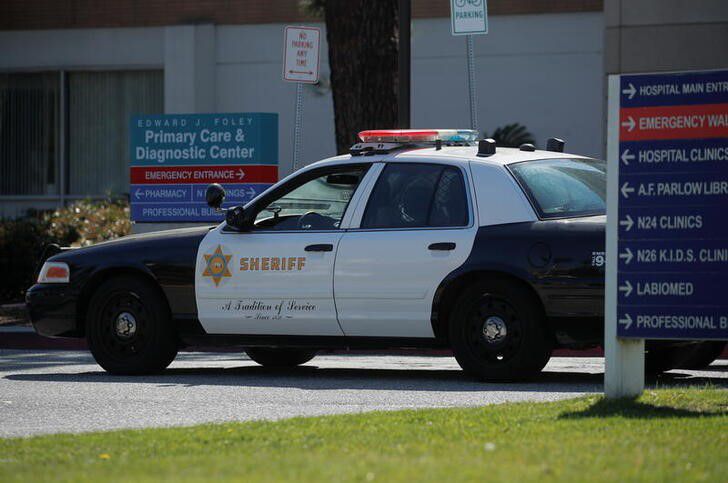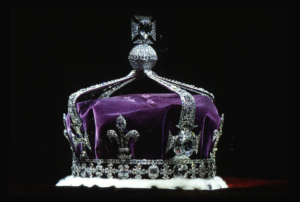(Reuters) – Poor, mostly minority communities around the country have complained for decades that some local law enforcement agencies often behave more like racist criminal street gangs than sworn peace officers, unlawfully terrorizing Black and Latino communities.
Although serious efforts to confront the issue on a systemic level have been absent, there is some evidence to support the assertion in many jurisdictions.
In Los Angeles, there is no doubt.
Officials have known that violent, racist gangs operate within the ranks of the nation’s largest local police force, the L.A. County Sheriff’s Department, for more than 30 years, according to news reports, federal court decisions, independent investigations and governmental analyses dating back to 1990. The deputy gangs create a shadow system of supervision, in conflict with the actual chain of command, and have an us-against-them culture that leads to racial profiling, frequent and excessive use of force, and sometimes deaths.
At least 18 of these secretive groups have been identified over the years, with macabre names like the Banditos, Jump Out Boys, Executioners and Grim Reapers, according to a 2021 report from the Loyola Law School Center for Juvenile Law and Policy.
Historically, the gangs have formed at mostly white police stations in poor, majority-Black and Latino immigrant communities – so-called “ghetto stations,” according to a 1992 study commissioned by the County Board of Supervisors. By contrast, majority-white, higher-income areas like Malibu “have never known deputy gangs or cliques,” the Loyola Center reported.
Six LASD stations accounted for well over half of the 133 deputy shootings between 2016 and 2021, and each “has an active deputy gang” and a history of complaints “and lawsuits alleging deputy-gang misconduct,” the Loyola report found. Approximately 80% of those shootings involved Black or Latino people.
The county keeps a running tab of legal claims related to the deputy gangs: the cases have cost L.A. about $21 million since 2010.
On March 24, a civilian commission formed in 2017 to oversee the sheriff’s department announced a “full-scale” investigation into LASD’s gangs.
The move appears to be a commendable effort to truly confront the scope of a profoundly serious problem that reflects on the fundamental fitness of a law enforcement agency. Reports documenting similar evidence of white supremacist individuals and gangs in other jurisdictions suggest police forces in other cities could benefit from similar investigations.
During a press conference March 29, Sheriff Alex Villanueva described the investigation as an attempt at “finding Bigfoot,” and accused the Los Angeles Times of colluding with the inspector general and commission to smear him during an election cycle. (The L.A. County Sheriff’s Department, in response to some of my questions about the investigation, referred me to a video of the press conference.)
I asked Sean Kennedy, commission chair and executive director of the Loyola Center, why the current investigation is different from past government-led efforts.
California’s public record act was recently amended “to make many incidents of police violence, sexual assault and false reporting ‘non-confidential,’” Kennedy said. “Since the deputy gangs appear to regularly engage in all these activities, we will likely have more access to the personnel files than past commissions.”
The gangs within LASD date back to at least 1971, senior officers told the Los Angeles Times in March 1999.
Members are tattooed with symbols of violence and death, use hand signals and prison slang, and sometimes “tax” trainee deputies for money or sex – just like many criminal gangs.
In 1990, a federal judge specifically found that “departmental policy makers” knew deputies in Lynwood had formed a “neo-Nazi, white supremacist gang,” the Vikings, yet tacitly authorized its corrupt behavior.
The last LASD undersheriff – the second-in-command – was a tattooed Vikings member who fatally shot a man under circumstances another cop called an “execution,” according to the Loyola report. He was sentenced to five years in prison in 2016 for obstruction of justice.
A pending lawsuit filed by internal whistleblowers also included allegations that the current undersheriff was a member of the police gangs. The LASD did not respond to requests for comment about the allegations.
Although it flies under the radar compared with the size of the Los Angeles Police Department, LASD is a sprawling agency even by global standards, with about 18,000 employees serving more than 10 million Americans. It spans nearly 200 communities, and oversees one of the largest jail systems in the world. The fact that racist law enforcement gangs have persisted in such a major department – and despite the protestations of local and federal officials – speaks to the prevalence of white supremacy in U.S. policing and the illegitimate entrenchment of police power in national politics.
The FBI warned of “white supremacist infiltration of law enforcement” by organized groups and individuals in a 2006 intelligence assessment. Its 2015 policy statement on counterterrorism pointed out that domestic terrorism investigations of white supremacists “often have identified active links to law enforcement officers,” according to a 2020 report by the Brennan Center for Justice.
Notably, Metropolitan Police Department officers in Washington, D.C., have also been documented using apparent gang signs and symbols that associate their units with violence and white supremacist groups, the Washington Post reported in August 2017. A D.C. judge dismissed a gun possession case that year over allegations that the arresting officers were involved in creating a t-shirt featuring the Grim Reaper – and which looked very much like the logos of the LASD gangs.
Kennedy said that the “persistence” of deputy gangs in LASD is unique. The current investigation has more information to build on and is confronting the problem during a generation when civilian oversight is no longer novel, he added.
He also said the dynamic inside law enforcement agencies is changing.
“Times are different,” Kennedy said. We believe many LASD members “oppose the deputy gangs and therefore will come forward notwithstanding the so-called ‘code of silence.’”
It’s a fair assumption, to my mind. And good reason for other oversight bodies to follow Los Angeles’ lead.




